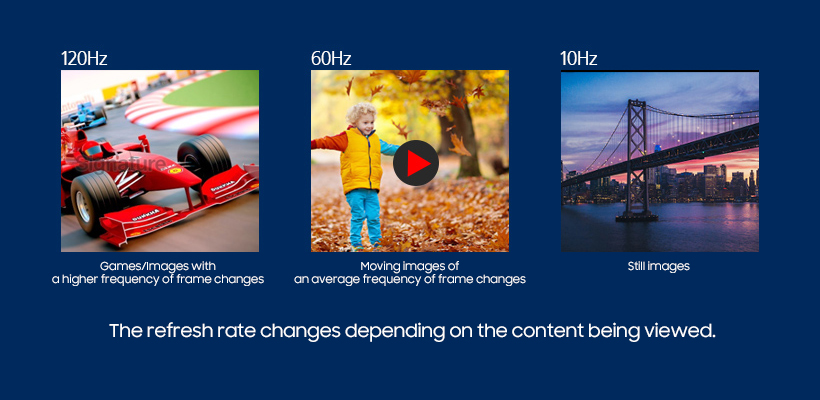
The refresh rate of a display refers to the number of frames per second that the display can generate and is measured in Hertz (Hz).
For example, a refresh rate of 120Hz equals 120 new images drawn on the display per second, while 60Hz equals 60 new images drawn per second. The higher the refresh rate, the more images per second are shown on the display meaning that a higher refresh rate will ensure that the visuals on the display are smoother and cleaner. This also means that a higher refresh rate will require higher power consumption as more images are displayed on the screen.

Games and videos, where the transition between frames is faster, benefit from a higher refresh rate as it can offer a smoother transition between frames. However, content based on images with few frame transitions or text does not require a high refresh rate as it does not make much of a difference to the image quality, and will only result in unnecessary power consumption.
‘Variable refresh rate’ was developed to address this issue. It applies a higher refresh rate for content that requires frequent frame transitions and a lower refresh rate for content that has relatively few frame changes.

The ‘adaptive frequency’ technology of Samsung Display is a variable refresh rate technology that adjusts the refresh rate of the display panel depending on the user’s setting. Watching sports and gaming that require faster frame shifts, use a 120Hz refresh rate, while emails and other content that do not require as frequent a change of frames use 30Hz. Photos and still images use a 10Hz refresh rate. Such flexible adjustments in the refresh rate reduce power consumption while ensuring high image quality on the display.




